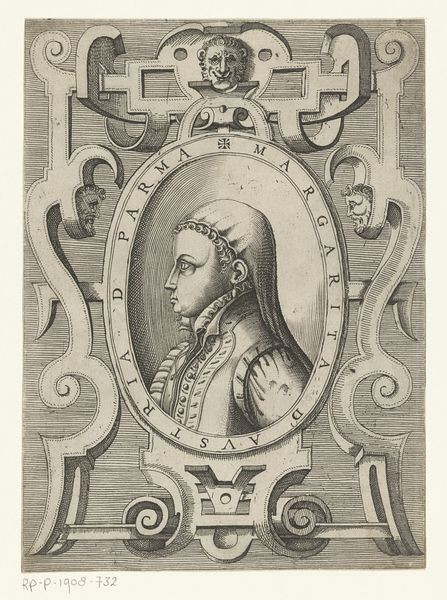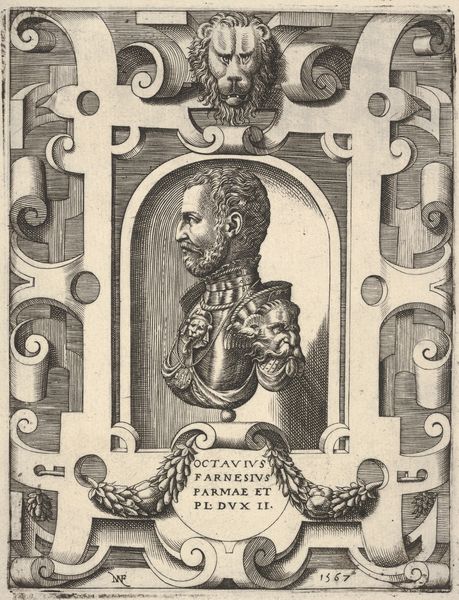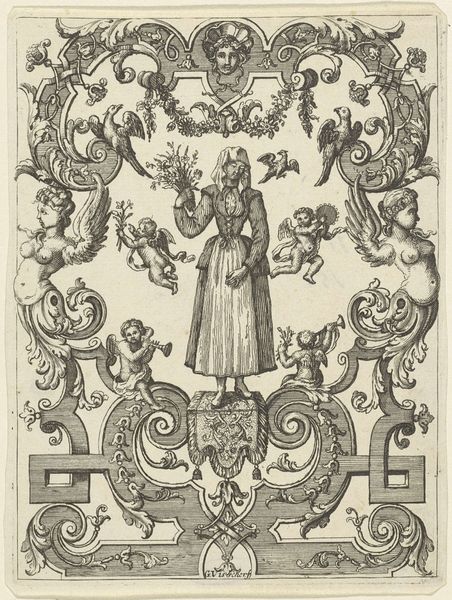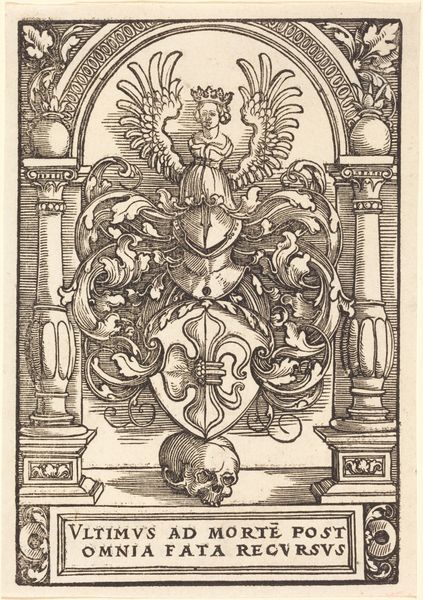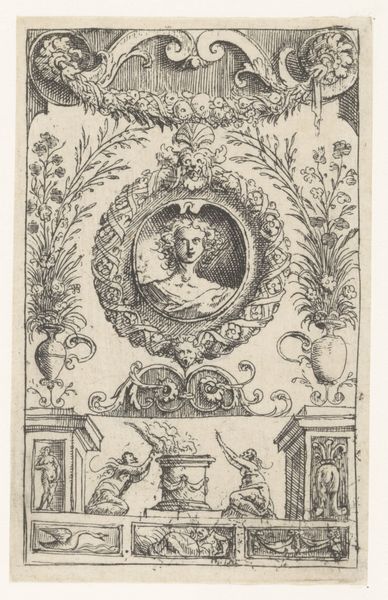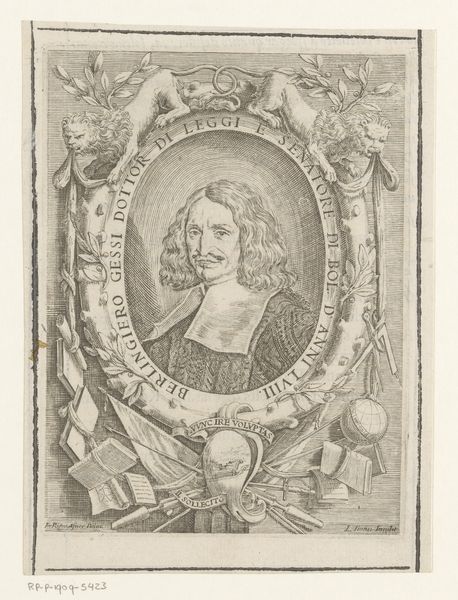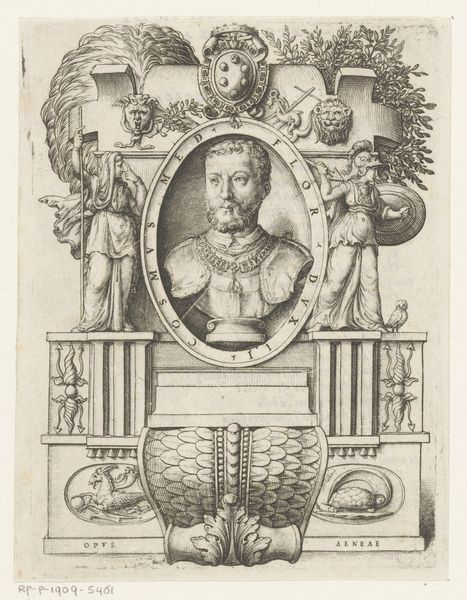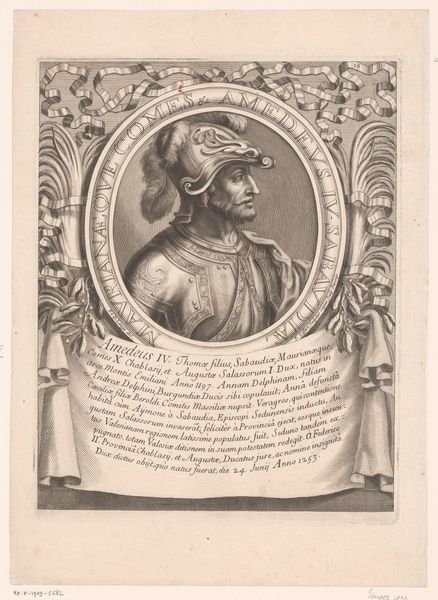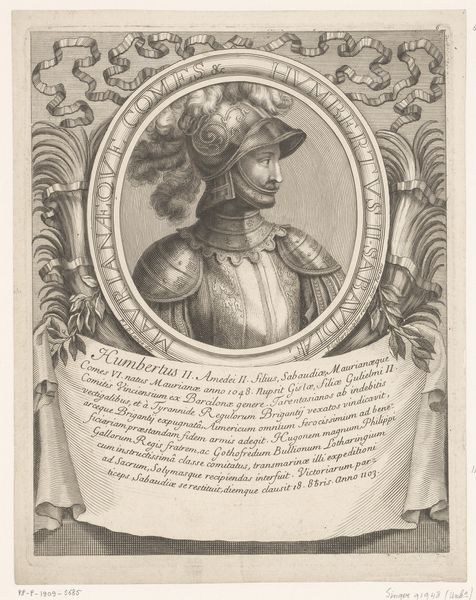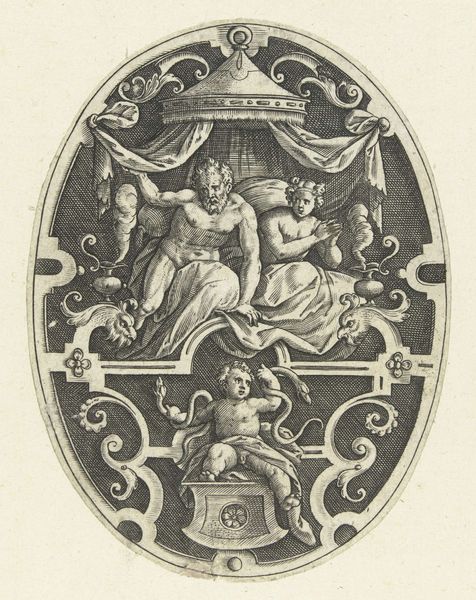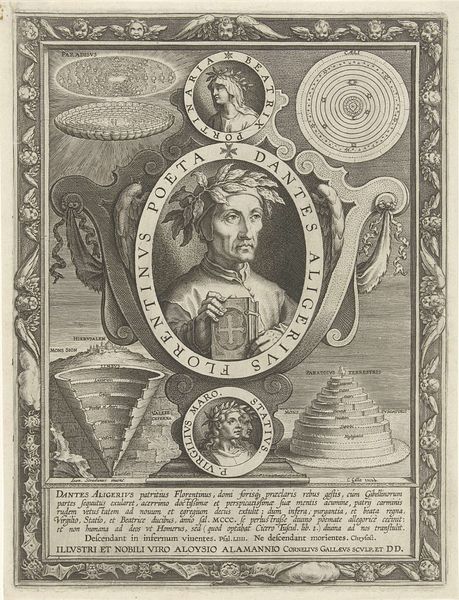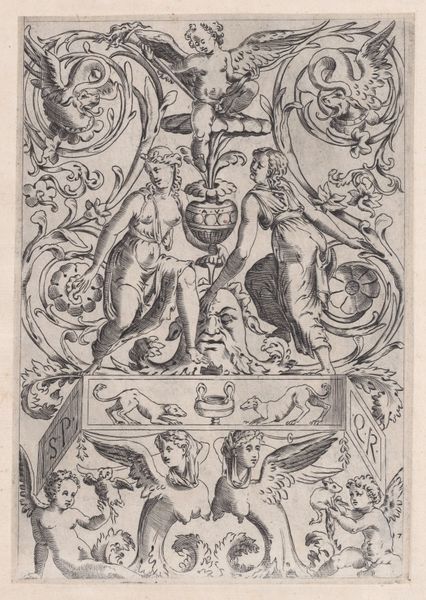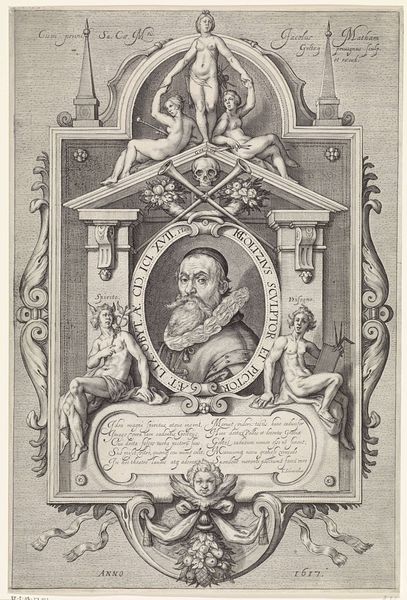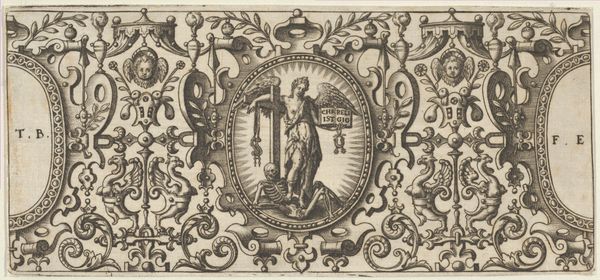
Bust profile portrait of Catherine de' Medici in an ornamented frame,from 'Portraits of some princes and illustrious people' ('Ritratti di alcuni prencipi, et huomini illustri'; also titled 'Imagines quorundam principum et illustrium virorum'), published by Bolognino Zaltieri in Venice in 1568 1567
0:00
0:00
drawing, print, engraving
#
portrait
#
drawing
#
medieval
#
pen drawing
# print
#
line
#
italian-renaissance
#
engraving
#
profile
Dimensions: plate: 6 15/16 x 5 3/16 in. (17.6 x 13.2 cm) sheet: 8 11/16 x 6 9/16 in. (22 x 16.6 cm)
Copyright: Public Domain
Editor: Here we have Nicolò Nelli's 1567 engraving, "Bust profile portrait of Catherine de' Medici." It's quite detailed, even intricate, but there's something severe about the Queen's expression. What stories do you see reflected in this piece? Curator: It’s interesting you pick up on the severity. While the ornamental frame might suggest celebration or reverence, Nelli’s choice to depict Catherine in profile aligns with the tradition of portraying rulers in a detached, almost stoic manner. How do you think this imagery reinforces or perhaps challenges her political power, given the turbulent context of 16th-century France with religious conflicts and factionalism? Editor: That's a great point. It seems like a way to project authority. Curator: Precisely! Consider her role as Queen Mother during a period of immense religious and political tension. Does this portrait subtly argue for her strength and legitimacy through visual cues? It also appears as an engraving within a book. How might its wide distribution impact opinions regarding Catherine? Editor: So it's not just about aesthetic representation, but about circulating a very specific *idea* of Catherine de Medici. Curator: Exactly. What power dynamics are at play when images become a form of political messaging? Remember, her reign was criticized, even demonized, for religious persecution and foreign interference. Editor: I hadn't considered the propaganda aspect so explicitly. Curator: That interplay of art, politics, and social perception is key here. By thinking about how gender and power were visually negotiated during the Renaissance, we can develop our critical understanding of its enduring legacies. Editor: I'm now seeing this as so much more than just a portrait! Curator: It’s a testament to how art serves as both a reflection and a tool for shaping historical narratives.
Comments
No comments
Be the first to comment and join the conversation on the ultimate creative platform.
